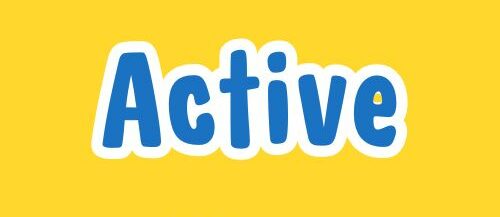Financial reports are the lifeblood of any organization, but for nonprofits, they hold even greater significance. They’re not just about tracking money; they’re a way to demonstrate transparency, accountability, and impact to donors, funders, and the public. This guide will break down everything you need to know about financial reports for nonprofits, from the basic types to best practices for creating them.
Understanding the Importance of Financial Reports
Imagine you’re running a lemonade stand to raise money for a new playground at your school. Everyone donates lemons, sugar, and cups, but you have no way of tracking how much you spend or how much money you raise. This makes it hard to know if your stand is successful and how you can improve it next year.
Financial reports are like a detailed record book for your nonprofit. They show where your money comes from (revenue), where it goes (expenses), and what you have left over (net assets). This information is crucial for several reasons:
- Transparency and Accountability: Donors and funders want to know their money is being used effectively. Financial reports show exactly how your nonprofit spends its resources.
- Decision-Making: Financial reports help your board and staff make informed decisions about resource allocation, program effectiveness, and future goals.
- Attracting Support: Strong financial reports can build trust and confidence, attracting new donors and grantors.
- Compliance: Nonprofits are required by law to file certain financial reports with the government.
Types of Financial Reports for Nonprofits
There are four main types of financial reports that most nonprofits need to be familiar with:
-
Statement of Financial Position (Balance Sheet): This report provides a snapshot of your organization’s financial health at a specific point in time. Think of it like a photo of your possessions (assets) and debts (liabilities) on a given day. The main categories include:
- Assets: Cash, investments, property, equipment, etc.
- Liabilities: Money owed to creditors (suppliers, banks, etc.)
- Net Assets: Assets minus liabilities. This shows your organization’s overall financial worth.
-
Statement of Activities (Income Statement): This report shows your revenue and expenses over a specific period (usually a year). It tells the story of how much money your nonprofit brought in and how it was spent. The main categories include:
- Revenue: Donations, grants, program fees, etc.
- Expenses: Program expenses (costs directly related to your mission), fundraising expenses, and management & general expenses (overhead costs).
-
Statement of Cash Flows: This report tracks the movement of cash in and out of your organization over a period. It helps you understand how your cash flow is impacted by different activities. The main categories include:
- Operating Activities: Cash generated or used by your core programs and services.
- Investing Activities: Cash used to purchase or sell investments like property or equipment.
- Financing Activities: Cash received from donations, grants, or borrowing money.
-
Statement of Functional Expenses: This report is specific to nonprofits and provides a breakdown of your expenses by program, fundraising, and management & general categories. This helps demonstrate how your resources are allocated towards achieving your mission.
Note: The specific names and formats of these reports may vary depending on your location and accounting standards.
Best Practices for Creating Financial Reports
Now that you understand the different types of reports, here are some tips for creating clear and informative financial reports for your nonprofit:
- Maintain Accurate Records: This is the foundation of good financial reporting. Use a reliable accounting system to track all income and expenses.
- Use Clear and Consistent Language: Avoid jargon and technical terms that your audience might not understand.
- Focus on Key Information: Don’t overwhelm your audience with too much detail. Highlight the most important financial metrics.
- Present Data Visually: Charts, graphs, and pie charts can make your reports more engaging and easier to understand.
- Include Explanatory Notes: Provide context and explanations for any significant changes or trends in your financial data.
Who Uses Financial Reports?
Financial reports are used by a variety of stakeholders, each with their own interests:
- Donors and Grantors: They use financial reports to assess the financial health and effectiveness of your organization before making a donation.
- Board of Directors: They rely on financial reports to make informed decisions about resource allocation, program development, and overall strategy.
- Creditors: Banks and other lenders use financial reports to assess the risk of lending money to your organization.
- The Public: Financial reports can build trust and transparency with the community your nonprofit serves.
Beyond the Basics: Additional Reporting Considerations
While the four core financial reports are essential, there are other factors to consider for comprehensive nonprofit financial reporting:
-
Compliance Requirements: Nonprofits are required by law to file certain financial reports with the government. These requirements vary depending on your location and the size of your organization. Thorough research and adherence to applicable regulations are essential. Consider seeking professional guidance from an accountant or tax advisor familiar with nonprofit accounting.
-
Audit Considerations: Your organization’s size and revenue may dictate the need for an independent CPA (Certified Public Accountant) to audit your financial statements. An audit provides an extra layer of assurance to stakeholders about the accuracy of your financial reports.
-
The 990 Form: In the United States, most non-profit organizations must file Form 990 with the IRS (Internal Revenue Service) annually. This form provides detailed information about your organization’s finances, programs, and governance.
-
Management’s Discussion and Analysis (MD&A): This is a narrative section that often accompanies financial reports. It provides an opportunity to discuss your organization’s financial performance, key achievements, and future plans in more detail. This ensures stakeholders grasp the context surrounding the figures.
-
Combined Financial Statements: If your nonprofit has any subsidiaries or affiliated organizations, you may need to prepare combined financial statements to provide a consolidated view of your entire organization’s financial health.
Financial Reporting Tools and Resources
Creating financial reports can be daunting, especially for smaller nonprofits with limited resources. Explore these valuable tools and resources for further assistance:
- Accounting Software: Many affordable accounting software programs are specifically designed for nonprofits. These programs can streamline data entry, automate reports, and ensure compliance with accounting standards.
- Financial Reporting Templates: Many nonprofit organizations and websites offer free or low-cost financial reporting templates. These templates can be a valuable starting point for creating your own reports.
- Professional Help: Consider seeking assistance from a qualified accountant or bookkeeper specializing in non-profit organizations. They can provide guidance on compliance, best practices, and ensure your reports are accurate and informative.
You can also read : Best Financial Planners for Corporate Executives
Conclusion
Financial reports are a vital tool for any nonprofit organization. By creating clear, concise, and informative reports, you can build trust with your donors, demonstrate your effectiveness, and secure the resources you need to achieve your mission. Remember, financial reports aren’t just about numbers; they’re a way to tell the story of your organization’s impact and inspire continued support for your cause.



